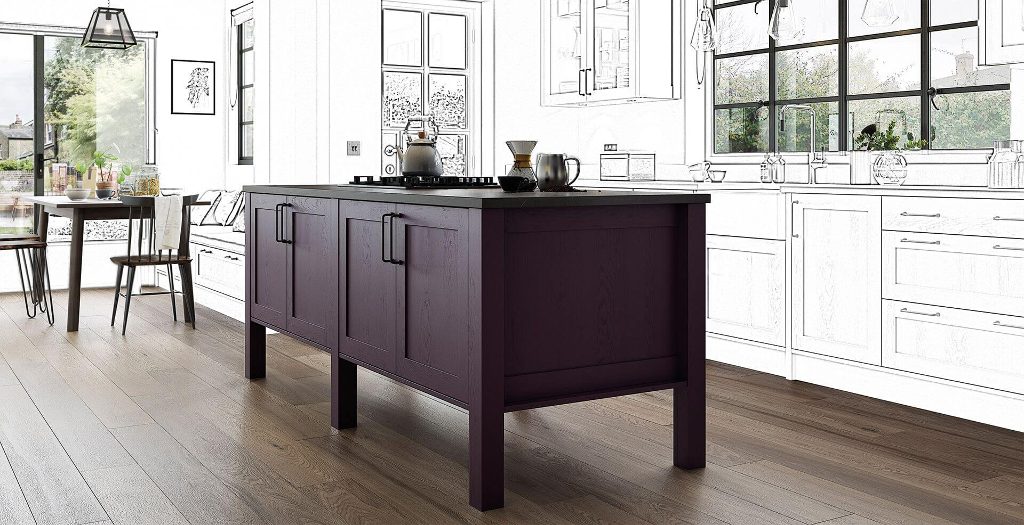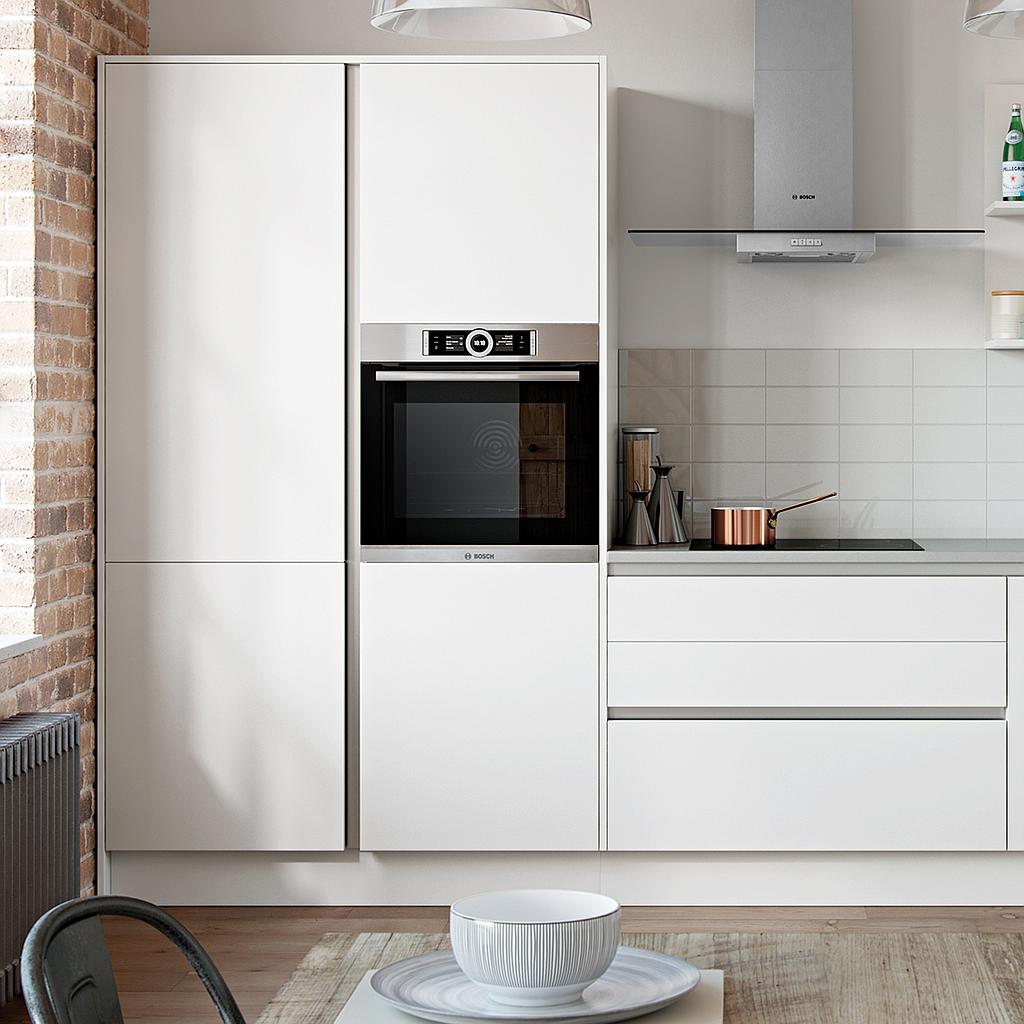How To Choose The Perfect Kitchen Colour
Choosing a kitchen colour is indeed a big decision. As the heart of the home, we spend a significant amount of time in the kitchen, which emphasises the importance of getting it right. Various styles are available, but have you considered the array of colours and which might be best for you? The colour you pick is ultimately a personal preference, but it should complement your home and align with your desires.

Exploring Your Preferred Kitchen Style
Defining the style you want for your kitchen is an essential starting point as it will significantly influence the colour scheme you select.

For a traditional, country-style kitchens, neutral colours with occasional colour highlights might be the best choice.

Alternatively, if you're seeking a modern, striking design, a white gloss kitchen is always a good option.
How Will Your Kitchen Be Used?
The kitchen type and colour often go hand-in-hand. If you're choosing a traditional kitchen with wooden doors, a lighter colour may not be ideal if you have a bustling kitchen with a young family. Given the risk of sticky fingers and fingerprints, darker colours might be more practical. However, if you're opting for a glossy kitchen, the colour options are limitless.
Colours and mood
Colours can significantly influence our mood. If darker shades make you feel gloomy, it might be best to choose a lighter, more characterful colour. Bright colours can transform a room and our emotions. As kitchens are places where we spend time with family and friends, selecting a colour that lifts our mood can be a wise choice.

Consider the Room Size
If your kitchen is smaller, a light colour can help the room feel larger and brighter. Dark colours, on the other hand, tend to make rooms feel smaller. But if you have a larger kitchen, a striking dark colour can work incredibly well with the space.
Despite this, if your kitchen is small yet you prefer darker colours, a solution might be choosing a dark colour for the cabinets but a light-coloured worktop or vice versa. There is no right or wrong here; it's about understanding how the space will feel.
Choosing the right colour for your kitchen largely depends on personal preferences, available natural light, kitchen size, and your existing furnishings. Here are some steps to help you:
a. Determine the Mood: Different colours incite different moods. For instance, red might stimulate appetite, while blue tends to suppress it.
b. Assess your kitchen size: Light colours can make a small kitchen appear larger, while dark colours add cosiness to a large kitchen.
c. Consider lighting: If your kitchen has ample natural light, you can afford to go for darker shades. For less-lit kitchens, opt for light colours to reflect light and brighten up the space.
d. Match with Existing Furniture: Your kitchen colour should complement your cabinets, countertops, and appliances.
e. Use colour charts or samples: These tools can give you a real feel for how colours might work in your space.
Whether your kitchen paint should be lighter or darker depends on several factors such as the size of the kitchen, available natural light, and the colour of kitchen units. Light colours can make a small kitchen look larger and brighter, especially if there is limited natural light. Dark colours, on the other hand, can add depth and sophistication to a larger kitchen. They can also hide stains and marks better than lighter colours. Regardless of the colour you choose, ensure it complements your kitchen cabinets, appliances, and worktops.
As of 2023, there's a diverse palette of popular colors for kitchens, reflecting varied personal preferences and design trends. Here are some of the favorites:
a. Greys: Light and dark shades of grey have gained significant popularity. They offer a sophisticated neutral backdrop that allows for a variety of design aesthetics and accent colors.
b. Dark Greens and Indigo Blues: These deep hues add richness and depth to a kitchen, giving it a striking and luxurious feel. They pair well with metallic accents and warm wood tones.
c. Forest Greens: This shade brings a touch of nature indoors, creating a calming and welcoming kitchen environment.
d. Whites and Light Naturals: Despite the rise of bold colors, whites and light natural colors remain popular for their timeless appeal. They help to create a bright, clean, and spacious look.
It's worth noting that the best colour for your kitchen is one that aligns with your personal taste and complements the overall design scheme of your home. Don't hesitate to experiment with colour swatches and samples to find your perfect shade.
There are no hard and fast rules about which colours should not be used in a kitchen. However, some design principles suggest avoiding overly bright colours like neon shades as they might be too energetic and potentially unsettling in a kitchen environment. Similarly, very dark colours may make a kitchen feel smaller and less inviting, especially if it's a small space with limited natural light. Nonetheless, personal taste and the overall design scheme of your home can override these principles. Remember, your kitchen should reflect your personal style and preferences.
Summary
Ultimately, the perfect kitchen colour boils down to your preferences. There are factors to consider, but your kitchen is all about you. Adding your personality through colour can help create a kitchen that truly reflects who you are.


